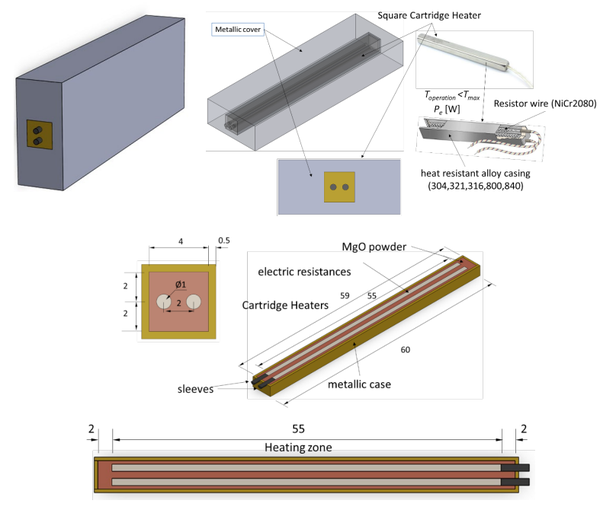Flipped classroom in Heat Transfer
Complete redesign of the Heat Transfer subject implementing the flipped classroom.
Teacher's name: Enrique Velo Garcia
Time: Transformation of the entire subject
Methodology: Classroom Activities, Flipped Classroom, Daily Assessable Activities
Class-group size: Between 15 and 30 students
Level of studies: Degree
Degree, semester within the degree and subject: GTIAE, Q8, Heat Transfer.
Possible adaptation of the activity to other subjects: Easily extrapolable to other subjects
Activity description:
The transformation of the subject has consisted of designing it to follow the concept of the flipped classroom.
The starting point for the creation of materials has been the notes and videos created in previous courses. To prepare for each class, students are asked to read “readings” and/or watch videos. The existing material has been fragmented in order to provide each day with what is useful for preparing for the next class.
For each activity, students must upload to ATENEA in the form of a task or questionnaire, the results of the activity. At the end of each class, they are also asked to write their conclusions. Basically, they are asked what they have learned and why it is important.
There are about 94 assignments throughout the course. There are 27 two-hour classes. On Tuesdays, classes are held in a computer room. On Thursdays, classes are held in an ordinary classroom. This was not intentional but a consequence of the lack of availability of computer labs at the center. In any case, the inconvenience has been tried to be turned into an opportunity, since the ordinary classroom allows the development and discussion of mathematical models and methodologies that will be used to do calculation exercises in the computer lab.
When in the laboratory, two experiments are carried out in a more or less traditional way.
The study of the application of numerical methods to heat transfer includes a design “challenge”. Using the PCs in the computer lab where classes are held (alternating days), students have access to a simulator. With this simulator they can test their design. The “challenge” of this course consists of the design of a heat sink whose function must allow an electrical resistance not to exceed a maximum temperature. The electrical resistance is a commercial design used to prevent water condensation in electrical cabinets in cold and humid environments. The work is done in groups of up to 4 people.

Team work:
For the “challenge” in the application of numerical methods, as well as for the practical groups, the students are given full freedom to form the groups. The monitoring of the group members in the simulation work (challenge) is done through peer evaluation. The work of the group members in the laboratory is done by the teacher in charge of the practicals.
Activity evaluation system and impact on the evaluation of the subject:
The learning outcomes are assessed through 94 deliverables. Some are worth 1 point (such as the conclusions of each day), others 3 points (such as the exercises done in class of less difficulty) and others 5 points (complex calculation exercises that require a good understanding of each part of the subject; they are started in class and must be completed before the next class).
Assessment elements:
- COND: Degree of achievement of the learning outcomes for conduction inside solids.
- CONV: Degree of achievement of the learning outcomes for convection at the solid-fluid interface.
- RAD: Degree of achievement of the learning outcomes for heat transfer by thermal radiation.
- SIM: Challenge-based project carried out by simulation using numerical methods.
- LAB: Work carried out in laboratory experiments.
Partial and final grades:
- NRA: Grade of achievement of learning outcomes during the course.
- NEF: Final exam grade
- NFIN: Final grade of the subject
Continuous assessment:
- NRA = COND/3 + CONV/3 + RAD/3 (of the work carried out during the course)
- NFIN-1 = 0.6 x NRA + 0.3 x SIM + 0.1 x LAB
Final exam:
Students who do not pass the subject with the grades obtained by the continuous assessment system may request to take a final exam on the date scheduled by the center for this purpose.
NEF = COND/3 + CONV/3 + RAD/3 (of the final exam exercises)
NFIN-2 = 0.6 x NEF + 0.3 x SIM + 0.1 x LAB
ATENEA's design:
Promotion of attendance in the classroom:
This course is in the testing phase.
Face-to-face learning is encouraged by doing the assessable activities mainly in class.

Share: